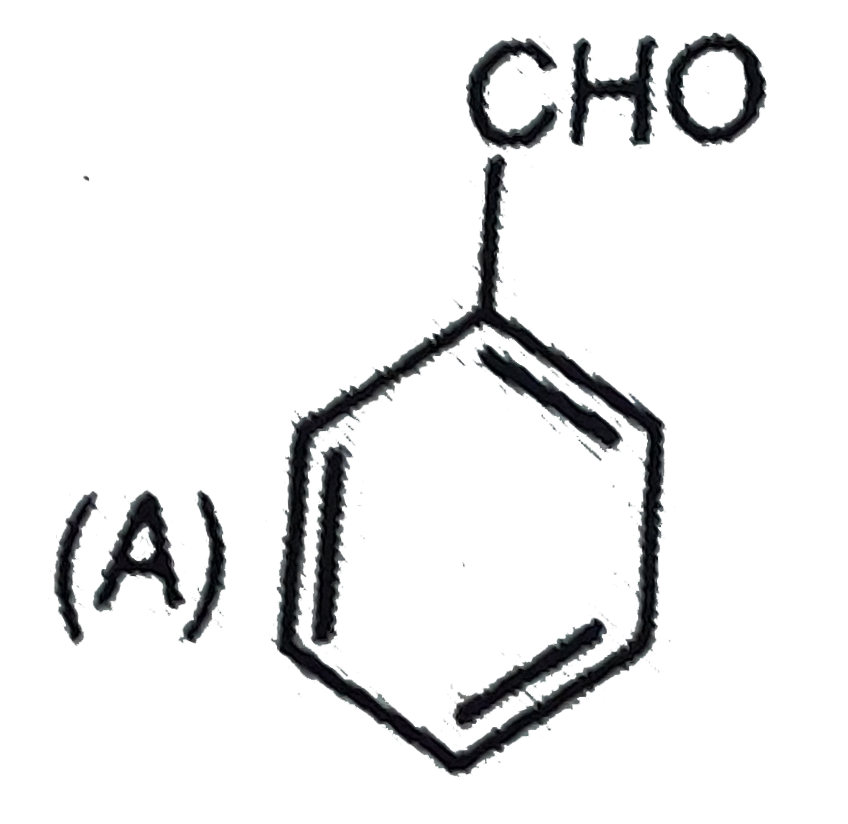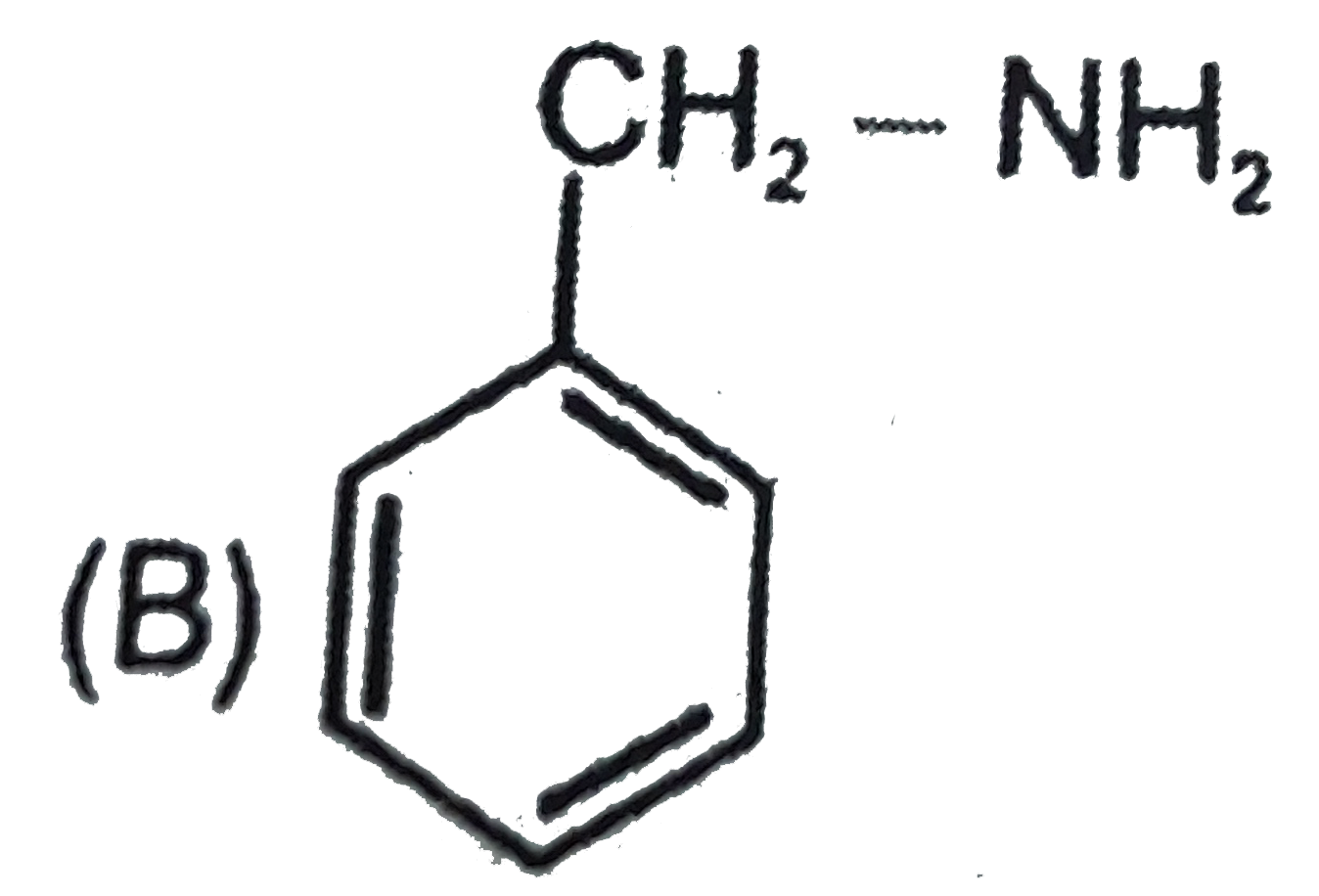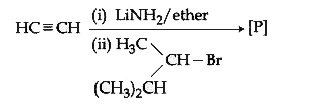The major product Y in the following sequence of reaction is:
Aniline (i)NaNO2/HCl,273K−−−−−−−−−−−−−−→(ii)CuCN/KCN(X)(i)DIBAL-H−−−−−−−→(ii)H2O(Y)




The correct Answer is:A
To determine the major product Y in the given sequence of reactions starting from aniline, let's break down the steps systematically.
Step 1: Diazotization of Aniline
- Reaction: Aniline (C6H5NH2) is treated with sodium nitrite (NaNO2) and hydrochloric acid (HCl) at 273 K (0°C).
- Process: This reaction leads to the formation of a diazonium salt. The amino group (-NH2) of aniline is converted into a diazonium group (-N2+).
- Product: The product formed is benzenediazonium chloride (C6H5N2Cl).
Step 2: Nucleophilic Substitution with Cyanide
- Reaction: The benzenediazonium chloride is then treated with copper(I) cyanide (CuCN) in the presence of potassium cyanide (KCN).
- Process: The cyanide ion (CN-) acts as a nucleophile and attacks the carbon of the diazonium group, leading to the substitution of the diazonium group with a cyanide group.
- Product: The product formed is benzonitrile (C6H5CN).
Step 3: Reduction of Benzonitrile
- Reaction: Benzonitrile is then treated with diisobutylaluminum hydride (DIBAL-H) followed by hydrolysis with water (H2O).
- Process: DIBAL-H reduces the nitrile group (C≡N) to an aldehyde (-CHO). The reaction involves the formation of an intermediate aluminum complex, which upon hydrolysis gives the final product.
- Product: The final product obtained is benzaldehyde (C6H5CHO).
Final Product Y
- The major product Y after the sequence of reactions is benzaldehyde (C6H5CHO).
Summary of Steps
1. Aniline + NaNO2/HCl → Benzenediazonium chloride (C6H5N2Cl)
2. Benzenediazonium chloride + CuCN/KCN → Benzonitrile (C6H5CN)
3. Benzonitrile + DIBAL-H → Intermediate → Benzaldehyde (C6H5CHO)
- Reaction: Aniline (C6H5NH2) is treated with sodium nitrite (NaNO2) and hydrochloric acid (HCl) at 273 K (0°C).
- Process: This reaction leads to the formation of a diazonium salt. The amino group (-NH2) of aniline is converted into a diazonium group (-N2+).
- Product: The product formed is benzenediazonium chloride (C6H5N2Cl).
- Reaction: The benzenediazonium chloride is then treated with copper(I) cyanide (CuCN) in the presence of potassium cyanide (KCN).
- Process: The cyanide ion (CN-) acts as a nucleophile and attacks the carbon of the diazonium group, leading to the substitution of the diazonium group with a cyanide group.
- Product: The product formed is benzonitrile (C6H5CN).
- Reaction: Benzonitrile is then treated with diisobutylaluminum hydride (DIBAL-H) followed by hydrolysis with water (H2O).
- Process: DIBAL-H reduces the nitrile group (C≡N) to an aldehyde (-CHO). The reaction involves the formation of an intermediate aluminum complex, which upon hydrolysis gives the final product.
- Product: The final product obtained is benzaldehyde (C6H5CHO).
- The major product Y after the sequence of reactions is benzaldehyde (C6H5CHO).
1. Aniline + NaNO2/HCl → Benzenediazonium chloride (C6H5N2Cl)
2. Benzenediazonium chloride + CuCN/KCN → Benzonitrile (C6H5CN)
3. Benzonitrile + DIBAL-H → Intermediate → Benzaldehyde (C6H5CHO)
Topper's Solved these Questions
- AROMATIC COMPOUNDS BOOK - RESONANCE ENGLISHCHAPTER - AROMATIC COMPOUNDS EXERCISE - PART-II SINGLE OR DOUBLE INTEGER TYPE
7 Videos
- AROMATIC COMPOUNDS BOOK - RESONANCE ENGLISHCHAPTER - AROMATIC COMPOUNDS EXERCISE - PART-III ONE OR MORE THAN ONE OPTION CORRECT TYPE
10 Videos
- AROMATIC COMPOUNDS BOOK - RESONANCE ENGLISHCHAPTER - AROMATIC COMPOUNDS EXERCISE - Part III- Match the column
3 Videos
- ATOMIC STRUCTUREBOOK - RESONANCE ENGLISHCHAPTER - ATOMIC STRUCTUREEXERCISE - ORGANIC CHEMISTRY(Fundamental Concept )
16 Videos
Similar Questions
Knowledge Check
The end product (Z) in the given sequence of reaction is
CH3CH=CHCHONaBH4−−−−→XHCl−−−→ZnCl2Y(i)KCN−−−−−→(ii)H+ZACH3CH=CHCH2COOHBCH3CH2CH2COOHCCH3CH=CHCOOHDCH3CH(Cl)CH2COOHIn the following sequence of reaction, the final product (Z) is
CH≡CHHg2+−−−→H2SO4XCH3MgX−−−−−→H2OY[O]−−→ZAethanalBpropan - 2 - olCpropanoneDpropane - 1 - olStudy the following sequence of reaction and identify the product (Y).
CH3CHO+HCHOdil.NaOH−−−−−→heatXHCN−−−→H3O+YACH2=CH−CH∣OH−COOHBCH3−CN∣C∣OH−COOHCCH3CH2−C∣OHH−COOHDCH2=CH−CH∣CN−COOH
 (A) overset(NaNO_(2)//HCl)underset((ii)H_(2)//Ni)underset(0-5^(@))(rarr)(B) , is:
(A) overset(NaNO_(2)//HCl)underset((ii)H_(2)//Ni)underset(0-5^(@))(rarr)(B) , is:
View SolutionWhat is Z in the following sequence of reactions?
ZPCl3−−→Xalc.KOH−−−−−→Y(i)Conc.H2SO4−−−−−−−−−→(ii)H2OboilZ
View SolutionIdentify unknown compounds A to E in the following series of chemical reactions.
(i)
(ii) A+Bdil NaOH−−−−→C+H2O
(iii) C(i)O3−−−−−−−→(ii)Zn/H2OA+D
(iv) DH2/Ni−−−→ΔE
View SolutionThe major product (Y) in the following reactions is:
CH3−CH3∣CH−C≡CHHgSO4,H2SO4−−−−−−−−→H2OX(i)C2H5MgBr,H2O−−−−−−−−−−−−−→(ii)Conc,H2SO4/ΔY
View SolutionIdentify (Z) in the following series.
EthanolPBr3−−→(X)Alc./KOH−−−−−−→(Y)(i)H2SO4/(Room temp)−−−−−−−−−−−−−−−−→(ii)(H2O,Heat)(Z)
View Solution

